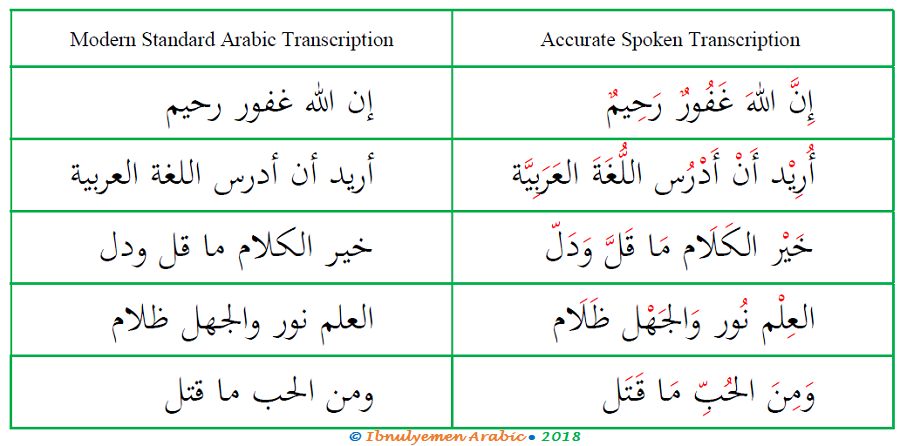Is there a word in English without a vowel? No. Linguistically, there cannot be a word/syllable without a vowel/syllabic consonant (i.e., a consonant that has some features of a vowel sound). Vowels help us divide words into syllables. Besides, it is articulatorily difficult to move from one consonant to another. Therefore, vowels aid the movement/transition between consonants. Reading the above three lines, you can see that each word has a vowel or vowels. In the previous lesson, you learn how letters are connected to form words. Where are the vowels in those words? On the surface, from the scripts of Modern Standard Arabic that you see in modern everyday print, there are no vowels. That is, all we see is consonants (except the words that have long vowels: ا, و, ي). Examining the last sentence in the table below, you can see only one long vowel, that is the alif in the word ما.
However, if you have looked at the scripts in the Book of Islam, the Holy Quran الْقُرْآنُ الْكَرِيم, you will see the true written form of spoken Arabic, even everyday spoken Arabic. About eighty to ninety per cent of the diacritical marks that you see on the letters are in fact vowels. More precisely, they are the Arabic short vowels. In the example below, you can see the difference between Modern Standard Arabic written form and the accurate spoken transcription.

If we decompose the first sentence under Modern Standard Arabic Transcription in the table above into its constituent letters, it would look like this:
|
ر + ح + ي + م |
غ + ف + و + ر |
ا + ل + ل + ـه |
إ + ن |
The sentence is devoid of short vowels. However, if we transliterate it into English, it will look like this:
inna allaha Ghafuur raHiim = إِنَّ اَللَهَ غَفُور رَحِيم
Looking the transliterated sentence, the short vowels are visible: two with the first word (kasra, fatha), three with the second (fatha, fatha, fatha), two with the third (fatha, dhamma), and two with the last (fatha, kasra). Therefore, unlike the common belief that Arabic does not have (short) vowels, it certainly does. These short vowels (or diacritical marks, in addition to sukuun ْ and shadda ّ ) are removed from the written form of Modern Standard Arabic (MSA) for purely practical reasons (i.e., ease of writing and transcription). Arabs know how to pronounce words correctly without the diacritics being assigned given their intuition as native speakers. For a learner of Arabic as an additional language, it is essential that these diacritics be learned and assigned to words as often as possible until receiving considerable knowledge and exposure to the language and achieving relatively good fluency.
The next lesson will provide more specific information about Arabic diacritics.